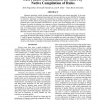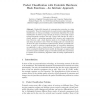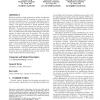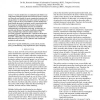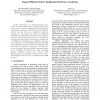LISA
2008
14 years 1 months ago
2008
Signature matching, which includes packet classification and content matching, is the most expensive operation of a signature-based network intrusion detection system (NIDS). In t...
INFOCOM
2000
IEEE
14 years 3 months ago
2000
IEEE
The ability to classify packets according to pre-defined rules is critical to providing many sophisticated value-added services, such as security, QoS, load balancing, traffic acco...
BIOADIT
2006
Springer
14 years 3 months ago
2006
Springer
Bandwidth demands of communication networks are rising permanently. Thus, the requirements to modern routers regarding packet classification are rising accordingly. Conventional al...
ANCS
2006
ACM
14 years 3 months ago
2006
ACM
While the problem of high performance packet classification has received a great deal of attention in recent years, the research community has yet to develop algorithmic methods t...
GLOBECOM
2009
IEEE
14 years 3 months ago
2009
IEEE
Energy efficiency has become a critical concern in designing high speed packet classification engines for next generation routers. Although TCAM-based solutions can provide high th...
ICNP
2003
IEEE
14 years 4 months ago
2003
IEEE
CAMs are the most popular practical method for implementing packet classification in high performance routers. Their principal drawbacks are high power consumption and inefficient...
AINA
2005
IEEE
14 years 5 months ago
2005
IEEE
– Packet classification on multiple header fields is one of the basic techniques used in network devices such as routers and firewalls, and usually the most computation intensive...
ICPP
2007
IEEE
14 years 5 months ago
2007
IEEE
In this paper, a novel packet classification scheme optimized for multi-core network processors is proposed. The algorithm, Explicit Cuttings (ExpCuts), adopts a hierarchical spac...
GLOBECOM
2007
IEEE
14 years 5 months ago
2007
IEEE
—Packet classification is an enabling function in Internet routers for a variety of Internet applications. In order to classify Internet packets into flows, Internet routers must...
IPPS
2008
IEEE
14 years 6 months ago
2008
IEEE
Packet classification is an important function in a router’s line-card. Although many excellent solutions have been proposed in the past, implementing high speed packet classifi...
